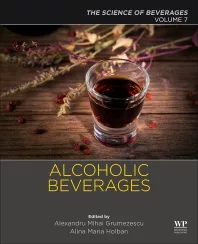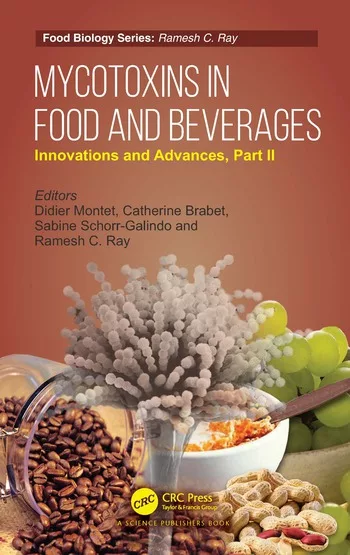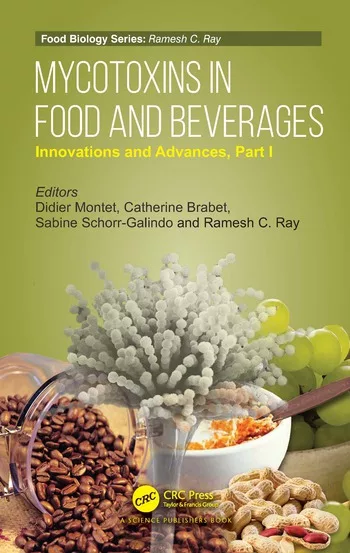Can Fortified Beverages Taste Great and be Good for You, Too?
![]()
Can Fortified Beverages Taste Great and be Good for You, Too?
by JOANNA COSGROVE
The fortified beverage segment is among the fastest growing
“wellness” category for two simple reasons: functional
beverages are not only good for you, they’re convenient. And from
supplying a simple energy boost to enhancing mental acuity, there are
nearly as many fortified beverage varieties as there are needs to fulfill.
“With today’s on-the-go lifestyle, getting
ideal levels of vitamins and minerals can be difficult, leading to a
substantial gap between the recommended daily intake (RDI) and what people
actually consume. Without sufficient levels of essential nutrients like
calcium, magnesium and potassium, negative health consequences can
arise,” says Barbara Heidolph, market development manager, food,
Astaris LLC, St. Louis, Mo. “While ideally the consumer would get all
necessary nutrients from food, the reality is that it is difficult to get a
high enough dosage to prevent disease. Fortified beverages, often packaged
in pop-top cans or single-serve bottles, enable the consumer to
conveniently take in ideal levels of essential nutrients.”
Fortified beverages are also an easy and relatively
inexpensive way for consumers to try nutrients that pique their curiosity.
In 1999 and again in 2003, DSM Nutritional Products Inc., Parsippany, N.J.,
a supplier of Omega-3, conducted consumer market research in conjunction
with HealthFocus International, St. Petersburg, Fla., and The Axiom
Research Group Inc., Eden Prairie, Minn. The research confirmed that
consumers have a penchant for trying beverages. “[The concepts of]
‘drink plenty of fluids’ and ‘we don’t have time to
prepare or consume meals balanced in nutrients’ help drive the
popularity of fortified beverages,” says DSM’s Diane Hnat,
senior marketing manager of the food industry unit in North America.
“From a manufacturer’s perspective, beverage production can be
quite economical and profitable. And enterprising ingredient suppliers
focus on developing first and foremost forms of their nutrients that
perform well (in areas of) function stability (and) beverage
matrices.”
But crafting a fortified beverage isn’t as easy
as adding a dash of vitamin C or a jigger of gingko extract. Functional
nutrients require special care and deliberation during the formulation
process. There’s testing to ensure ingredient bioavailability,
mouthfeel and palatability to address, because, let’s face it, many
good-for-you ingredients like choline, iron and thiamine have
less-than-ideal flavors.
Fortitech Inc., Schenectady, N.Y., has devised a novel
way to help beverage formulators meet their label claims via customizable
nutrient pre-mixes that take the guesswork out of beverage fortification.
“The premixes not only assemble the right kind of nutrients to give
you the overall marketing and nutrient profile on your label, they also
offer bioavailability to guarantee the nutrient’s usefulness to the
consumer,” comments Ram Chaudhari, senior executive vice president
and chief scientific officer at Fortitech.
The premixes also virtually eliminate the hassles of
ingredient interactions, processing conundrums and other criteria that make
fortifying a beverage so difficult. “We have a ready-made 100 percent
RDI standard premix, but we believe in customizing,” Chaudhari says.
“We have 12,000 different products and no
two products are alike. Every product has its own unique test appeal
— one can’t forget the importance of the testing aspect. If it doesn’t test well,
you decrease your chances of anyone buying the product a second
time.”
Botanical ingredients present their own formulation
challenges, the two most common hurdles being color and taste.
“Functional waters have become one of today’s hottest industry
trends, and offer an excellent opportunity for incorporating botanical
extracts for their well-recognized beneficial support. However, water
beverages are traditionally clear. One drop of a botanical extract affects
the overall color of the beverage,” says Tom Connelly, vice president
of sales at Bio-Botanica, Hauppauge, N.Y. “This is where flavor
houses come in. Beverage formulators rely on the expertise of flavor houses
to mask an undesirable color or flavor associated with the use of a
botanical extract in a functional beverage.”
Raising the bar for standard nutrients
With osteoporosis awareness and prevention at an
all-time high, it’s no wonder calcium and magnesium have become two
of the most sought after minerals for beverage fortification. Already a
mainstay ingredient in milk and orange juice, calcium is heralded for its
ability to strengthen bones and teeth.
Research presented at a recent National Osteoporosis
Foundation International Symposium indicated that healthy bones and soft
tissues need calcium in concert with phosphorus
to grow and develop normally through a lifetime, and to maintain healthy
structure. Astaris’ calcium fortification technology delivers calcium
and phosphorus in a ratio identical to the
composition of teeth and bones.
Magnesium, in addition to assisting with the
absorption of calcium, also aids in reducing stress, maintaining cardiovascular health, and can help fight Type II
diabetes. “Magnesium works with other formulation ingredients to
balance essential minerals in infant formula, meal replacement beverages,
energy drinks, and geriatric beverages,” adds Astaris’
Heidolph. “An essential mineral for physical health and well-being,
magnesium supports the formation of bones and teeth by assisting with the
absorption of calcium and phosphorus. Magnesium is also important for good
bone retention, making enrichment with this mineral especially effective
when formulating products for women.”
The top concerns when fortifying with calcium and
magnesium tend to be bioavailability, dispersion, taste, palatability and
stability. “Many magnesium fortification systems have an unstable pH,
resulting in color changes, flavor inconsistency and protein instability in
juices, meal replacement beverages and other drinks,” Heidolph says.
“Some magnesium fortification sources heat up upon hydration and have
a drifting pH, which can result in color changes, flavor inconsistency,
protein instability, and loss of heat-labile (temperature-sensitive)
vitamins in juices, meal replacement beverages, and other fortified drinks.
“Fortification of soy beverages poses a
particular problem in that magnesium can cause negative interactions with
soy protein, producing off-odors and flavors,” she says.
“Astaris’ Mag-nificent magnesium phosphate technology does not
have a negative interaction with soy protein, nor does it heat upon
hydration, which helps maintain a clean flavor profile and enrichment in
soy beverages.”
Calcium fortification is also fraught with cost and
formulation challenges, which have traditionally stymied processors’
attempts to develop clear calcium-fortified beverages, but Astaris is
making strides in that realm.
“With many calcium fortifiers, a chalky or
gritty mouthfeel results when beverages are enriched to 10 to 20 percent of
the recommended daily allowance,” says Heidolph. “Keeping
proteins soluble and protected is a challenge that beverage manufacturers
must also overcome to achieve calcium-fortified beverages with ideal
characteristics. Astaris’ polyphosphates enable dispersion of soy
protein, keep fortified beverages in liquid form, and prevent syneresis
(separation) of the beverage matrix.”
The Puracal XP product line from Purac America U.S.A.,
Lincolnshire, Ill., was specially developed to meet the current demands for
calcium fortification in the beverage industry. The Puracal XP line is
comprised of calcium lactate gluconate
products, which are branded as Puracal XPro and Puracal XPerform.
“Both of these calcium sources interact the least with other beverage
ingredients, resulting in highly stable beverage,” explains Sharon
Rokosh, senior market development specialist, Purac. “The XP line
exhibits a short dissolution time, high bioavailability and neutral flavor
— the latter being especially important for mild flavored beverages,
such as enhanced waters and sports drinks.”
Purac’s latest development is Puracal XPure, a
new grade of Puracal XP that’s been optimized for flavor and
developed for use in water and other minimally flavored beverages.
In addition to calcium, the company also provides
magnesium, zinc, potassium, iron, copper and
manganese that are GMO-free, kosher-certified, allergen-free, easy to
process, highly soluble and bioavailable. “Our minerals are
allergen-free, which includes them being lactose-free,” says Ellis
Hogetoorn, senior market development specialist. “A major driving
factor for the fortification of beverages is that a lot of people are
either lactose intolerant or simply don’t like milk. For this
demographic, we have juices and other beverages that are fortified with a
lactose-free mineral source.”
Proprietary ingredients go mainstream
Visitors to July’s IFT 2004 Annual Meeting &
Food Expo witnessed the launch of a variety of exciting new fortified
beverages. Among the most interesting were from Cargill, Minneapolis, Minn.
Cargill used two new beverages as vehicles for its
proprietary ingredients. Heart Healthy Smoothie was a raspberry smoothie
made with the company’s CoroWise plant sterols that meet the U.S.
Food and Drug Administration’s sterols heart health claim while being
a good source of fiber and calcium.
Apple rose flavored JointWise was billed as “a
classic North American sports beverage” that promotes joint health
because each serving contains 200 mg. OptaFlex chondroitin per serving.
GRAS (Generally Recognized as Safe) OptaFlex natural chondroitin, is
manufactured using a unique, water-based process that enables great-tasting
joint healthy products.
Both OptaFlex and CoroWise plant sterols are produced
using proprietary processing technology. “OptaFlex natural
chondroitin, which is produced using a water-based process, creates a
product that allows many finished products to be created without the need
of added flavor masking systems,” says Lee Knudson, product manager,
Cargill. “To showcase our OptaFlex product’s ease of use, we
chose the beverage segment because these are typically one of the most
difficult formulation areas for innovative ingredients.”
Similarly, a process was developed to help incorporate
CoroWise plant sterols into beverages. “Plant sterols are not
water-loving ingredients and traditionally have been incorporated into
fat-based applications such as margarines and spreads,” says Pam
Stauffer, marketing manager at Cargill.
Current beverages on the market that contain CoroWise
plant sterols include Minute Maid Premium Heart Wise and Rice Dream
Heartwise rice milk.
During the past year,
Kemin Foods, Des Moines, Iowa, heralded several new beverage announcements
regarding its FloraGlo brand Lutein. According to the company’s Alex
Fink, strategic marketing manager, FloraGlo Lutein can be found in such mainstream beverages as Sunsweet’s
reformulated prune juice, which now includes 500 mcg. of FloraGLO per
serving, Ensure and Glucerna meal replacement beverages, and Hain Celestial
Group’s Pure Foods Mixed Veggie Juice and Carrot Juice, which each
contain 1 mg. of purified lutein per 8-ounce serving.
The Hain juices are packed with vitamins and minerals
and are free of genetically engineered ingredients. “We are impressed
with the continued research supporting FloraGLO Lutein’s versatile
role in good health. As a manufacturer of natural products, we were excited
with the opportunity to partner with Kemin to make foods and beverages even
better for consumers and to differentiate our products on the grocery
shelf,” said Maureen Putman, general manager for the grocery business
unit at The Hain Celestial Group, in a statement announcing the products.
Also new, but still in the prototypical stage is a
grapeseed extract-fortified water from Polyphenolics, a division of
Constellation Wines U.S., Canandaigua, N.Y. Ron Martin, vice president of
sales, says the antioxidant beverage is a great starting point for a new
beverage line because it’s packed with compelling features.
“This particular formula, which is an alternatively sweetened,
low-carb, low-calorie flavored water, will deliver the same antioxidant
capacity as a serving of fruit when 10 ounces of the beverage is
consumed,” he says.
Achieving the right flavor was a suprisingly
uncomplicated proposition. “Using the level of 50 mg. of grape seed
extract per 8 ounces of any fruit flavor will have an excellent
taste,” Martin says. “If anything, it enhances the fruit flavor
and cuts the sweetness level to make a gulpable low-carb beverage that is an alternative to water or juice. This is the
level that we have self-affirmed as GRAS for beverages with notification to
the FDA.”
Not just good for the skin
Everyone knows that aloe vera is great for the skin,
but a growing number of consumers also know the benefits of its
consumption. Aloe is regarded for its immune-enhancing properties and is
said to stimulate the body’s own antioxidant production. And
that’s just the tip of the iceberg, according to Jeff Barrie, sales
manager at Aloecorp, Broomfield, Colo. Aloe also has been linked to
lowering cholesterol and blood sugar levels. And it can play a key role in
the health of a low-carb dieter.
“These days, there are few of us who don’t
know someone following a ‘low-carb’ diet plan,” says
Barrie. “A recent study at Yale University found that consuming foods
high in animal protein, saturated fat, eggs and dairy could compromise the
immune system. It is no myth that fruits and vegetables provide
antioxidants, and are known to boost the immune system. This is a great
reason to ingest aloe, especially if you are restricting your intake of
fruits and vegetables as a result of following a low-carb diet plan,”
he says.
“The recommended daily dose of an aloe drink is
1 to 2 ounces, one to two times daily, or 150 to 300 mg. one to two times
daily. If you’re counting carbs, 3 ounces of aloe vera contain about
three calories and only 0.5 percent carbohydrates by weight.”
The biggest complaint Barrie has heard concerns the
taste of aloe, which is fairly bland with a slight hint of citrus.
“While many of us easily acquire a taste for aloe, for those more
finicky consumers, aloe can easily be masked with added flavors, or blended
in with your favorite fruit or vegetable juice,” Barrie says.
The company did just that in Ageless Xtra, a
nutrient-packed beverage manufactured for Oasis Wellness Network,
Broomfield, Colo. The berry-flavored concentrate is labeled to be a full
spectrum cell renewal formula that promotes energy; supports memory, mental
clarity and focus; helps manage stress; and promotes joint comfort and
flexibility. In addition to aloe vera, the beverage also contains green
tea, vitamins B3 and B6, skullcap and ginkgo extracts, and cordyceps
sinensis.
“A majority of consumers
acknowledge that their diets could be healthier, and scientific research
increasingly substantiates the relationship between health and diet,”
surmises Purac’s Rokosh. “Boomers especially are very receptive to nutrient-dense beverages. Furthermore,
interest in these beverages is quite high among
younger consumers who are typically very willing to experiment with new
products and like the convenience factor.
“The beverage industry
is the fastest-growing and most versatile segment of the food industry, and
this allows for a high level of formulation flexibility — resulting
in an ideal base for good-tasting, fortified/enhanced
products,” she continues. “Formulators are easily able to
incorporate at least the minimum dietary requirements in order to make
approved health claims, and advances in technology have made it possible to fortify beverages without sacrificing taste or stability.” BI
Looking for a reprint of this article?
From high-res PDFs to custom plaques, order your copy today!






